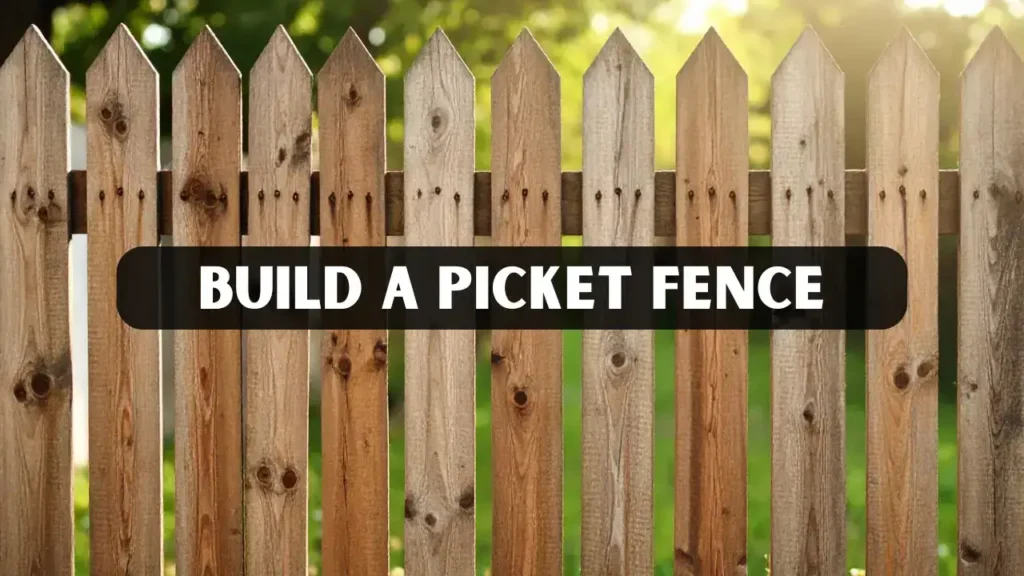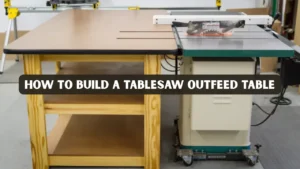Key Takeaways
- Learn how to build a picket fence step by step using basic tools and woodworking skills.
- Understand the types of pickets, post installation, and layout methods for long-lasting results.
- Discover the best wood materials and finishes to ensure your fence withstands weather conditions.
- Get practical safety and maintenance tips for keeping your fence strong and attractive for years.
- Ideal for DIYers who enjoy hands-on projects and want to improve their outdoor spaces.
Why You Should Build a Picket Fence
A picket fence has always symbolized classic beauty and craftsmanship. Beyond its traditional charm, it adds structure and definition to your outdoor space. Whether you want to enhance curb appeal or create a safe play area for children, a well-constructed fence makes a noticeable difference. Learning how to build a picket fence provides a hands-on experience that combines skill with creativity.
This timeless woodworking project is suitable for both beginners and experienced DIYers. Using quality materials and proper installation techniques ensures durability and longevity. Following expert guidance and step-by-step instructions helps achieve professional results. A picket fence not only elevates aesthetics but also increases property value and safety.
Understanding the Basics of a Picket Fence
Before you start, it’s important to understand what makes a picket fence unique. Typically standing between three to four feet tall, this design features evenly spaced vertical boards (pickets) attached to horizontal rails. The simplicity of the structure makes it a perfect project for both beginners and experienced woodworkers.
Key Components of a Picket Fence
- Posts: Provide the main support and are anchored firmly into the ground.
- Rails: Horizontal boards connecting the posts and supporting the pickets.
- Pickets: Vertical boards that form the visible pattern of the fence.
- Caps and Finials: Decorative elements that can be added for style or protection.
When you plan to build a fence, ensure the spacing, height, and material complement the design of your house and garden.
Planning Your Fence Layout
Proper planning ensures your fence is both functional and visually balanced. Measure your property boundaries accurately and mark the intended fence line using string and stakes.
Steps to Plan Your Fence
- Check Local Regulations: Confirm property line rules and height limits in your area.
- Mark Fence Corners: Drive stakes into the ground at each corner of your planned fence.
- Run a Guide Line: Stretch a string between corner stakes to represent the fence line.
- Measure Post Spacing: Posts are typically spaced 6–8 feet apart for stability.
- Account for Gates: Leave appropriate gaps for gate openings if needed.
Taking time to plan helps you avoid uneven sections or awkward gaps once construction begins.
Choosing Materials and Tools
The quality of your fence depends heavily on the materials you choose. Cedar and redwood are popular because of their resistance to rot and insects. Pine is more affordable but needs sealing or painting for longevity.
Recommended Tools
- Measuring tape
- Level
- Post hole digger
- Power drill
- Circular saw
- Hammer or nail gun
- Safety gloves and goggles
Recommended Materials
- Fence posts (pressure-treated wood or cedar)
- Horizontal rails
- Pickets
- Screws or nails (galvanized for outdoor use)
- Concrete mix for securing posts
- Exterior paint or wood stain
Step by Step Guide to Picket Fence Installation
This is the main section where you’ll learn how to build a picket fence from start to finish.
Step 1: Set the Fence Posts
Posts are the backbone of your fence. Dig holes approximately one-third the height of your fence. For a 4-foot fence, dig about 14–16 inches deep. Add a few inches of gravel for drainage, then insert the post. Pour concrete into the hole, ensuring the post stays level while it sets.
Allow the concrete to cure for at least 24 hours before attaching rails.
Step 2: Attach the Rails
Once the posts are solid, attach the horizontal rails. Use a level to ensure they’re perfectly aligned. Typically, you’ll use two rails — one near the bottom and one near the top of the fence.
Use exterior screws to fasten the rails to each post. This provides the structural base for your pickets.
Step 3: Prepare and Cut Pickets
Cut your pickets to uniform height. You can choose from pointed, rounded, or square tops depending on your preferred look. Sand rough edges to prevent splinters.
To maintain consistent spacing, create a spacer block that ensures even gaps between each picket.
Step 4: Attach the Pickets
Start at one end of the fence line and attach each picket vertically using screws or nails. Use your spacer block between pickets to keep the pattern consistent.
Check every few pickets to ensure they remain straight and level. Small adjustments early prevent large misalignments later.
Step 5: Paint, Stain, or Seal
Once all pickets are attached, apply a protective finish. Paint, stain, or sealant will protect your fence from weathering. Choose an exterior-grade product designed for wood exposed to moisture and sunlight.
Painting provides a clean, classic look, while staining allows the natural grain to show through.
Expert Tips for Accuracy and Durability
A professional-looking fence depends on attention to detail.
- Use a laser level for perfect alignment of posts and rails.
- Pre-drill screw holes to prevent wood splitting.
- Seal cut ends before attaching pickets for added weather resistance.
- Install post caps to keep water from entering the tops of posts.
- Maintain consistent spacing between pickets for a uniform appearance.
Each of these steps enhances the durability of your build and ensures the structure remains attractive for years.
Common Mistakes to Avoid
Even small errors can affect the outcome when you build a picket fence. Here are common issues and how to prevent them:
- Skipping concrete: Posts may lean or shift over time.
- Uneven spacing: Always use spacers for consistency.
- Poor material choice: Non-treated wood deteriorates quickly outdoors.
- Ignoring slope adjustments: For uneven ground, use the racked fence method to follow the terrain.
Attention to detail during planning and installation saves time and frustration later.
Design Variations and Customization Ideas
A picket fence doesn’t have to follow one pattern. You can customize height, shape, and spacing to fit your property’s design.
Popular Styles
- Traditional Pointed: Classic garden look with uniform pointed pickets.
- Dog-Eared: Rounded or clipped tops for a softer appearance.
- Scalloped: Alternating high and low sections for decorative flow.
- Horizontal Pickets: Modern design that stands out in contemporary yards.
Custom finishes, decorative post tops, and two-tone paint can further enhance visual appeal.
Maintenance and Long-Term Care
A well-maintained fence can last decades. Regular care keeps it strong and visually appealing.
Maintenance Checklist
- Inspect annually for loose screws or nails
- Reapply paint or sealant every 2–3 years.
- Replace damaged pickets immediately.
- Keep soil and vegetation from touching the wood.
- Clean with mild detergent and water to remove dirt or mold.
These small habits will protect your investment and preserve your craftsmanship.
Real-World Experience and Insights
Experienced woodworkers know that weather, wood type, and soil condition all affect the lifespan of your fence. If your yard retains moisture, use pressure-treated posts. In dry climates, cedar offers excellent durability and less shrinkage.
Professionals also recommend planning post depth according to local frost lines to prevent heaving during winter. If you’re a beginner, practice cutting and spacing on scrap boards before installing the first picket.
Why Building a Picket Fence Is Worth It
Aside from its practical purpose, building a picket fence gives a sense of achievement and adds charm to your home. The process teaches valuable woodworking skills, from measuring and cutting to alignment and finishing.
It’s a project that combines creativity with craftsmanship, producing something both functional and beautiful.
Safety Tips
Always prioritize safety when handling tools and heavy materials.
- Wear gloves, goggles, and hearing protection.
- Avoid loose clothing near power tools.
- Keep your workspace organized and free from debris.
- Ensure tools are unplugged before changing blades or bits.
- Lift heavy materials with your legs, not your back.
Safety ensures you enjoy the project from start to finish without accidents.
Conclusion
Learning how to build a picket fence is both a creative and practical woodworking skill. From planning and layout to finishing and maintenance, each step reflects patience and craftsmanship. With the right materials, accurate measurements, and regular upkeep, your fence will stand tall and sturdy for years to come.
Building your own fence is not just about enclosing space, it’s about adding a personal touch to your property, improving aesthetics, and showcasing your woodworking talent.
Frequently Asked Questions
How Long Does It Take to Complete the Fence?
Depending on the length and number of helpers, most fences can be completed within two to three days.
What wood type lasts longest outdoors?
Cedar and redwood are naturally rot-resistant and ideal for outdoor projects.
Can I install a picket fence on uneven ground?
Yes. Use stepped or racked sections to follow the contour of the land.
How deep should fence posts be set?
Posts should be set one-third of their total length into the ground and secured with concrete.
How can I prevent my fence from rotting?
Seal all exposed wood surfaces and keep soil away from direct contact with the pickets.




